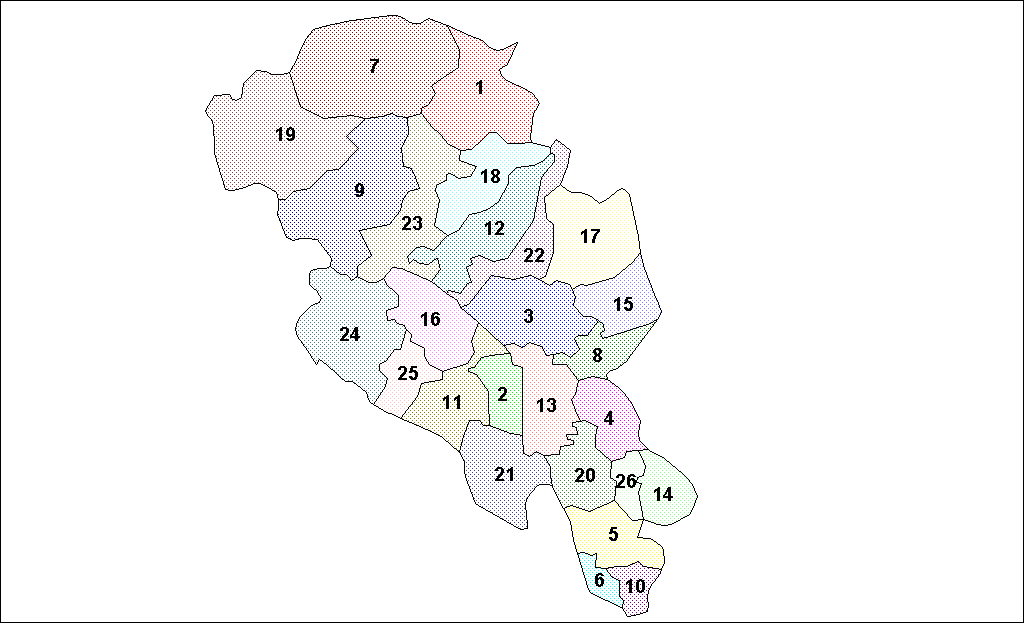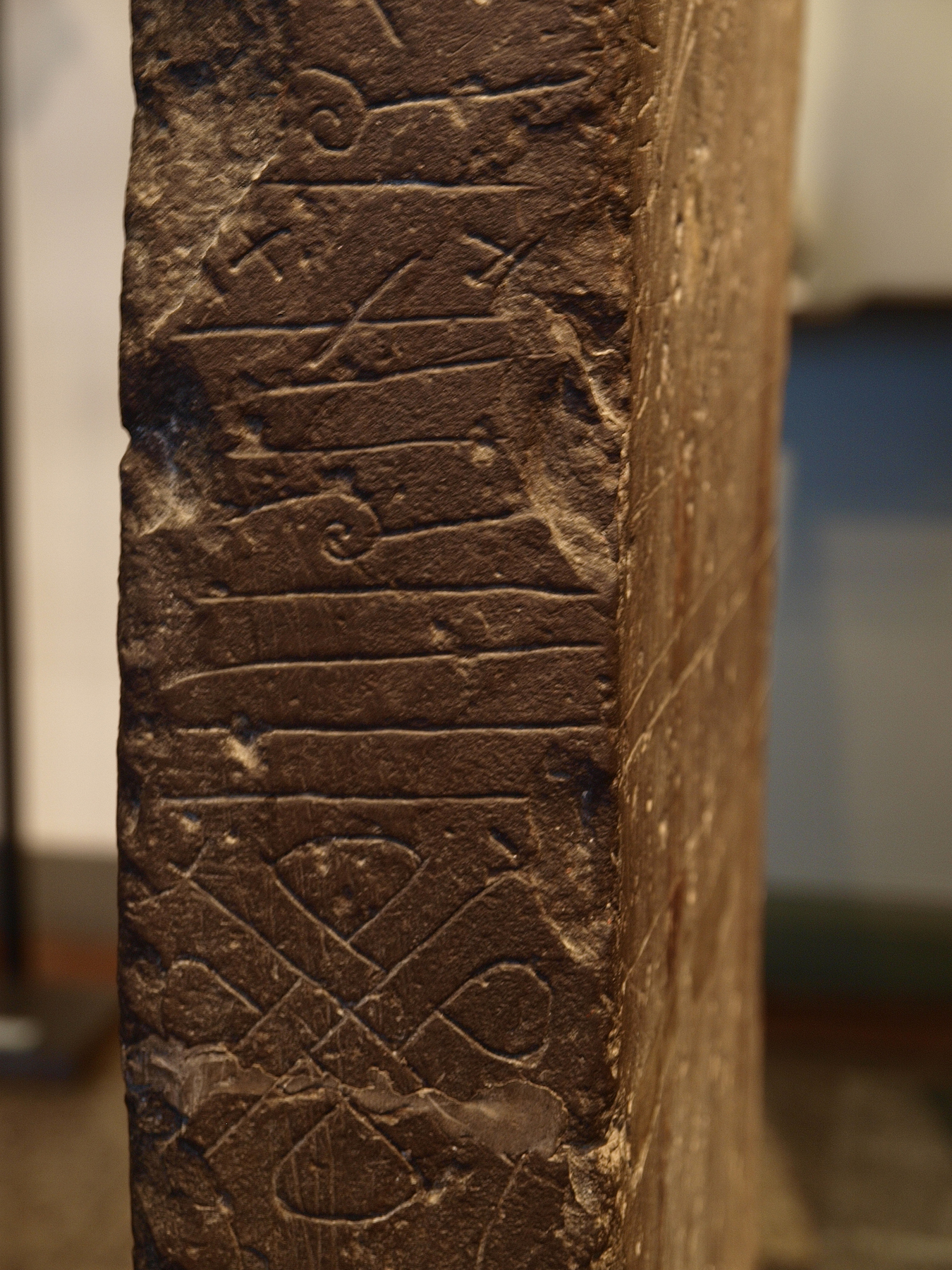|
Halfdan The Old
Halfdan the Old (Old Norse: ''Hálfdanr gamli'' and ''Hálfdanr inn gamli'') was an ancient, legendary king from whom descended many of the most notable lineages of legend. A second Halfdan the Old is the purported great-grandfather of Ragnvald Eysteinsson. Halfdan the Old, ancestor of many lineages ''Hyndluljód'' The eddic poem ''Hyndluljód'' states in verses 14–16: Though Halfdan is himself called a Skjöldung in verse 14, in verse 16 the Skjöldungs are named instead as one of the families that sprang from Halfdan's marriage with Álmveig. ''Skáldskaparmál'' Snorri Sturluson explains in the ''Skáldskaparmál'': Snorri then gives examples from skaldic verse where these names are used as general terms for 'lord' or 'ruler'. The promise of three hundred years of no women among Halfdan's descendants is paralleled in the story of Ríg-Jarl who has sons only but no daughters. See Ríg (Norse god). None of the titles given here duplicate titles such as ''h ... [...More Info...] [...Related Items...] OR: [Wikipedia] [Google] [Baidu] |
Old Norse Language
Old Norse, also referred to as Old Nordic or Old Scandinavian, was a stage of development of North Germanic dialects before their final divergence into separate Nordic languages. Old Norse was spoken by inhabitants of Scandinavia and their overseas settlements and chronologically coincides with the Viking Age, the Christianization of Scandinavia, and the consolidation of Scandinavian kingdoms from about the 8th to the 15th centuries. The Proto-Norse language developed into Old Norse by the 8th century, and Old Norse began to develop into the modern North Germanic languages in the mid- to late 14th century, ending the language phase known as Old Norse. These dates, however, are not precise, since written Old Norse is found well into the 15th century. Old Norse was divided into three dialects: Old West Norse (Old West Nordic, often referred to as ''Old Norse''), Old East Norse (Old East Nordic), and Old Gutnish. Old West Norse and Old East Norse formed a dialect continu ... [...More Info...] [...Related Items...] OR: [Wikipedia] [Google] [Baidu] |
Völsung
Völsung ( , ) is a figure in Germanic mythology, where he is the eponymous ancestor of the Völsung family (, ), which includes the hero Sigurð. In Nordic mythology, he is the son of Rerir and was murdered by the Geatish king Siggeir. He was later avenged by one of his sons, Sigmund, and his daughter Signy, who was married to Siggeir. Völsung's story is recorded in the Völsung Cycle, a series of legends about the clan. The earliest extant versions of the cycle were recorded in medieval Iceland; the tales of the cycle were expanded with local Scandinavian folklore, including that of Helgi Hundingsbane (which appears to originally have been part of the separate tradition of the Ylfings), and form the material of the epic poems in the Elder Edda and of , which preserves material from lost poems. Völsung is also the subject matter of the Middle High German epic poem and is referred to in the Old English epic ''Beowulf''. Name The Old English is composed of a suffix de ... [...More Info...] [...Related Items...] OR: [Wikipedia] [Google] [Baidu] |
Raumaríki
Romerike is a traditional district located north-east of Oslo, in what is today south-eastern Norway. It consists of the Akershus municipalities Lillestrøm, Lørenskog, Nittedal, Rælingen and Aurskog-Høland in the southern end (Nedre Romerike), and Ullensaker, Gjerdrum, Nannestad, Nes, Eidsvoll and Hurdal in the northern end (Øvre Romerike). Etymology The Old Norse form of the name was ', but the name must be much older (see below). The first element is the genitive plural of ' m ("person from Romerike"); the final element is ' n ("realm"; cf. Ringerike, Rånrike). In the '' Hversu Noregr byggdist'' and in '' Thorsteins saga Víkingssonar'', the name is attributed to the mythical king Raum the Old (''Raumr inn gamli''). According to the latter saga, the members of the family were big and ugly, and because of this big and ugly people were called "great Raumar". The linguistic similarity to Romerriket is entirely coincidental. History The name Romerike may be derive ... [...More Info...] [...Related Items...] OR: [Wikipedia] [Google] [Baidu] |
Raum The Old
Raum the Old (Old Norse: ''Raumr inn gamli'') is a legendary king in Norway in the '' Hversu Noregr byggdist'' and in Thorsteins saga Víkingssonar. The saga of ''Hversu Noregr byggðist'' tells of two kings known as Raum. It is not simple to tell them apart; although the author of the saga appears to have put in some clues. In ''Hversu Noregr byggdist'' The first King Raum is son of the eponymous first king of Norway, King Nór and Queen Hedda (''Höððu)''. The second Raum is the first King Raum's and Queen Bergdis' grandson through their son Jötunbjörn the Old. The second Raum is by all probability King Raum the Old. In ''Hversu Noregr byggðist'', as well as other sagas, such as Örvar Odd's saga, the cognomen ''inn gamli'' - the Old - refers to the person's longevity, not as in the elder or younger of two. Quite specifically the cognomen ''inn gamli'' refers to a certain capability of death-defiance acquired by certain sacrifices (''bloþ),'' typically lasting for three ... [...More Info...] [...Related Items...] OR: [Wikipedia] [Google] [Baidu] |
Oppland
Oppland is a former county in Norway which existed from 1781 until its dissolution on 1 January 2020. The old Oppland county bordered the counties of Trøndelag, Møre og Romsdal, Sogn og Fjordane, Buskerud, Akershus, Oslo and Hedmark. The county administration was located in the town of Lillehammer. Merger On 1 January 2020, the neighboring counties of Oppland and Hedmark were merged to form the new Innlandet county. Both Oppland and Hedmark were the only landlocked counties of Norway, and the new Innlandet county is the only landlocked county in Norway. The two counties had historically been one county that was divided in 1781. Historically, the region was commonly known as " Opplandene". In 1781, the government split the area into two: Hedemarkens amt and Kristians amt (later renamed Hedmark and Oppland). In 2017, the government approved the merger of the two counties. There were several names debated, but the government settled on ''Innlandet''. Geography Oppland ext ... [...More Info...] [...Related Items...] OR: [Wikipedia] [Google] [Baidu] |
Ringerike (traditional District)
Ringerike is a traditional district in Norway, commonly consisting of the municipalities Hole, Norway, Hole and Ringerike (municipality), Ringerike in Buskerud county. In older times, Ringerike had a larger range which went westward to the municipalities Krødsherad, Modum, and Sigdal, also in Buskerud. Ringerike has a rich history that is connected with one of the most notable kings in the history of Norway, the father of King Harald Fairhair Halfdan the Black, who subdued Gandalf Alfgeirsson, King of Alfheim and half of Vingulmork, and the Dagling clan. Gandalf was possibly the last king of Ringerike, whose name is given to the eponymous King Hring, son of Raum the Old (cf. Romerike), son of Nór (the eponymous ancestor of Norwegians), according to the Sagas of the ancient Northernlands, better known as the ''Orkneyinga saga''. It is possible that this, as the name suggests, was the legendary heartland of the House of Sigurd Hring and Ivar the Wide-Fathoming. There are also many ... [...More Info...] [...Related Items...] OR: [Wikipedia] [Google] [Baidu] |
Flatey Book '', one of the most important medieval Icelandic manuscripts
{{geodis ...
''Flatey'' may refer to either of two islands in Iceland: *Flatey, Breiðafjörður *Flatey, Skjálfandi See also * ''Flateyjarbók ''Flateyjarbók'' (; "Book of Flatey, Breiðafjörður, Flatey") is an important medieval Iceland, Icelandic manuscript. It is also known as GkS 1005 fol. and by the Latin name ''Codex Flateyensis''. It was commissioned by Jón Hákonarson and p ... [...More Info...] [...Related Items...] OR: [Wikipedia] [Google] [Baidu] |
Franks
file:Frankish arms.JPG, Aristocratic Frankish burial items from the Merovingian dynasty The Franks ( or ; ; ) were originally a group of Germanic peoples who lived near the Rhine river, Rhine-river military border of Germania Inferior, which was the most northerly province of the Roman Empire in continental Europe. These Frankish tribes lived for centuries under varying degrees of Roman hegemony and influence, but after the collapse of Roman institutions in western Europe they took control of a large empire including areas which had been ruled by Rome, and what it meant to be a Frank began to evolve. Once they were deeply established in Gaul, the Franks became a multilingual, Catholic Christian people, who subsequently came to rule over several other post-Roman kingdoms both inside and outside the old empire. In a broader sense much of the population of western Europe could eventually described as Franks in some contexts. The term "Frank" itself first appeared in the third cent ... [...More Info...] [...Related Items...] OR: [Wikipedia] [Google] [Baidu] |
Denmark
Denmark is a Nordic countries, Nordic country in Northern Europe. It is the metropole and most populous constituent of the Kingdom of Denmark,, . also known as the Danish Realm, a constitutionally unitary state that includes the Autonomous administrative division, autonomous territories of the Faroe Islands and Greenland in the north Atlantic Ocean.* * * Metropolitan Denmark, also called "continental Denmark" or "Denmark proper", consists of the northern Jutland peninsula and an archipelago of 406 islands. It is the southernmost of the Scandinavian countries, lying southwest of Sweden, south of Norway, and north of Germany, with which it shares a short border. Denmark proper is situated between the North Sea to the west and the Baltic Sea to the east.The island of Bornholm is offset to the east of the rest of the country, in the Baltic Sea. The Kingdom of Denmark, including the Faroe Islands and Greenland, has roughly List of islands of Denmark, 1,400 islands greater than in ... [...More Info...] [...Related Items...] OR: [Wikipedia] [Google] [Baidu] |
Ylfings
The Wulfings, Wylfings or Ylfings (the name means the "wolf clan") was a powerful clan in ''Beowulf'', ''Widsith'' and in the Norse sagas. While the poet of ''Beowulf'' does not locate the Wulfings geographically, Scandinavian sources define the Ylfings (the Old Norse form of the name) as the ruling clan of the Eastern Geats. The Wulfings play an important role in ''Beowulf'' as Beowulf's father Ecgþeow of the Wægmunding clan had slain one of its members, and was banished for not paying the weregild. The Danish king Hroðgar, who was married to Wealhþeow, a Wulfing woman, graciously paid the weregild, and when Beowulf arrived at the Danish court in order to slay Grendel, Hroðgar interpreted this as a son's gratitude. In Old Norse sources, the clan figure prominently in the ''Heimskringla'' and in '' Sögubrot'', where Hjörvard and his son Hjörmund belong to it. It is also mentioned in the '' Lay of Hyndla'' and in ''Skáldskaparmál'' where Eiríkr the Wise was one of its ... [...More Info...] [...Related Items...] OR: [Wikipedia] [Google] [Baidu] |


